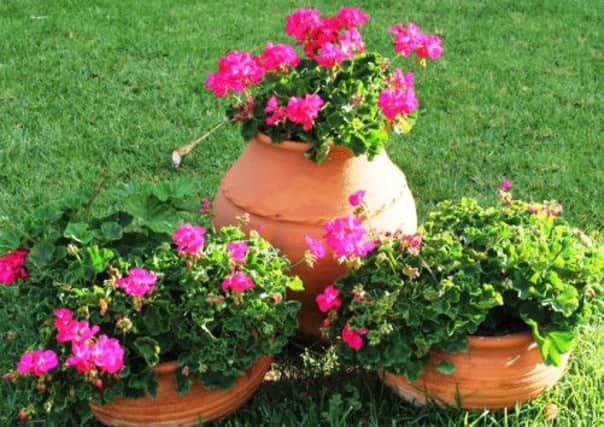Summer in a pot


Just three pots, a bit scarred and cracked, but nevertheless providing a vivid spark of life for the next three or four months. Cheap and very cheerful and within the means of just about everyone.
The pots were old terracotta, their contents one of the standards of the British summer – the humble and yet so appealing pelargonium, bought as plant plugs for less than a fiver. Garden centres and DIY stores sell them in their millions.
Advertisement
Hide AdAdvertisement
Hide AdBut how anything so fragile and so seemingly helpless can survive and turn into something so beautiful and so vibrant is a bit of a mystery. There is hidden steel in that bit of greenery.
Pelargoniums are one of the favourite flowers of summer. They are used for containers and hanging baskets, for the front of beds and borders, and they will bloom for months until the frosts of autumn turn their stems to mush.
Don‘t confuse them with the true geraniums – the cranesbills – many of which are hardy enough to live outdoors all year round. The ones you buy as plant plugs are more at home in the heat of the Mediterranean where they can tolerate the sun and dry air.
Bought in spring, tiny geraniums can be allowed to grow on somewhere light and frost-free, potted on as they get larger, and finally planted outdoors, in beds, baskets or other containers, when the threat of frost has passed. For some areas, that will be May; for the majority in the North, that will be June.
Advertisement
Hide AdAdvertisement
Hide AdFrom then until October they are quite capable of flowering constantly. Kept watered (although they are capable of thriving for quite a while without moisture) and few occasionally, they will put on a show that outclasses the majority of garden flowers.
Some people can’t bear to part with them, and, in October, will dig them up, clean them up and take them indoors, cutting off old and damaged leaves and stems, then potting the smaller, tidier plants individually and allowing them to grow on into next spring.
Some will survive; some will not. Thankfully, the garden centres will be packed with new plant-plugged pelargoniums next year, so whatever the outcome, replacements will be available.